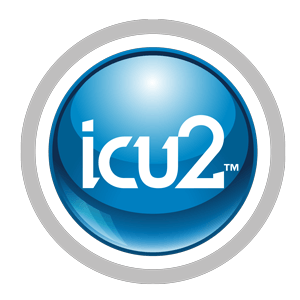Call: +61 (0)3 5259 3512 icu2 Client Portal | Resources & Downloads
Case Study: Merri Health
Educational Explainer Video for Supported Residential Services
Project Management, Creative Development, Storyboarding, Animation, Editing, Audio Engineering
Merri Health approached icu2 for the development and design of a series of training videos to broaden the reach of training programs amongst SRS managers and provide a resource which SRS providers could refer back to. icu2 created a suite of 4 animated videos on the topics of: Understanding Diabetes; SRS Menu and Process Review; Cultural Dietary Needs; Ethical Dietary Needs; Vegetarian Meals; Health and Safety; Medical Conditions and Allergies.
Merri Health engaged icu2 to design and animate a range of explainer videos. The goal was to standardise their communications and make their education programs accessible to more people. Based in the city of Moreland in Melbourne, Merri Health is a not-for-profit community health provider committed to creating and supporting healthy and connected communities. By leveraging the power of digital media, the organisation is able to reach audiences more regularly, with the content they need, when they need it; deepening the impact of change programs with rich content and visual storytelling.
- Executive Summary
Merri Health provides services and support to Supported Residential Service facilities in the city of Darebin and Moreland. As is the case with most community organisations, servicing a large geographic region means that staff are often spread out thinly when meeting the broad needs of the local community. Specifically, challenges can arise when providing training, as the number of engagements is limited to how many quality presentations can reasonably be delivered per week.
The Problem:
How to increase the frequency and quality of training on:
- Understanding Diabetes
- SRS Menu and Process Review
- Cultural Dietary Needs
- Ethical Dietary Needs
- Vegetarian Meals
- Health and Safety
- Medical Conditions and Allergies
- The Requirement
Where training programs were traditionally delivered in person, the client needed a way to augment their training and support activities with a range of educational explainer videos. The client engaged icu2 to design and deliver a range of videos in an informative and engaging format, within a clearly defined budget and timeline.
- The Solution
Project Management:
One of the challenges was to identify ways to streamline the creative and production process in order to meeet timelines, scope and budget. icu2 managed the project applying a hybrid agile-waterfall approach out of software development (not normally used in creative projects). This approach breaks the project into short sprints, within the context of a clearly defined scope and budget.
Creative:
Initially the client envisaged a powerpoint style presentation with simple animation to maintain control over costs. Having assessed the budget in relation to the requirement for high quality communication, icu2 suggested a more engaging result could be achieved by reallocating project funds from character illustration and scene design to animation. This was achieved by customising stock vectors as the basis of characters and scenes and focusing more on custom animations using modified illustrations.
Communication:
With multiple departments involved in oversite over the project, it was imperative to maintain communication through a single point of contact within the organisation. This prevented miscommunication between internal and external stakeholders. As these types of projects are very labour and time-intensive, we encouraged more regular comms between production staff and client (15 minutes at the start of the day), short management meetings (half an hour at the end of the week) and client sign-offs upon completion of sprints/milestones.
Reviews and Amendments:
Due to the linear dependencies of tasks, an unforeseen change in the latter stages would affect earlier production stages, requiring significant rework, re-processing and re-editing.
To maintain control over scope and budget, each video was broken down into scenes, milestones and stages with client reviews and signoffs allocated to each stage. Client amendments were budgeted into the cost of the project, with stages closed upon finalisation and approval. Reopening a stage after it had been closed would require an amendment to the scope. This incentivised both the client and agency to be thorough and methodical in the management of changes. As a result, there was only one out-of-scope author's amendment. A change registry was maintained throughout the project with signoffs from clients, internal stakeholders and the agency.
Timelines:
As the project was being publicly presented to the Department of Health and Human Services, a hard deadline had to be defined for the project. Upon assessment of the project plan, timelines and resources, it was agreed that one video could be produced within the proposed timeframe. This deadline was met.
We were able to expedite the process by allocating scenes to multiple team members. Consistent look and feel were achieved by referencing the brand specification, a visual brief for both static and moving images and a single point of creative direction internally.
- The Outcome
icu2 delivered 4 educational videos. The project was delivered at a high commercial quality within the allocated time and budget and above the initial expectations of the client. Since then the videos have been rolled out to SRS facilities, whos management teams use them as part of their training programs.
icu2 Pty Ltd
T: +61 (0)3 5259 3512
E: info@icu2.com.au
W:
www.icu2.com.au
ACN: 169 623 367
ABN: 53 169 623 367
© Copyright 2022 | icu2 Pty Ltd | All Rights Reserved
Office Hours (by appointment only)
Mon-Fri: 9am - 5pm AEST
Sat: 9am - 12pm AEST
Technical Support
Mon-Sat: 9am - 9pm AEST

